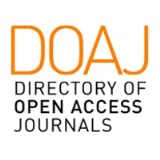Notes for a Didactic Model for Teaching Musical Language in Early Years Education
DOI:
https://doi.org/10.58265/pulso.4951Keywords:
Music Education, Infant Education Stage, Musical Language, Didactic SongAbstract
Teaching the musical language is a very hard task that, sooner or later, must be faced by every music teacher. But, should we teach this musical language at school, starting even at Infant Education stage? Although some pedagogues have defended an opposite view, the investigations in musical psychology point that not only it is possible, but we will be encouraging the language development of the students. This article proposes a series of didactic songs focused towards the learning of musical notation of the pentatonic scale. This material is thought to be used in the second cycle of Infant Education and the Þ rst cycle of Primary Education. Together with these songs, there is a didactic guide for its use. The model means to be open, ß exible, active and meaningful for the student.
Downloads
References
AKOSCHKY, J. (2002). La educación musical para niños y niñas de 2 y 3 años. Cantar tocar y escuchar. En revista Eufonía, número 24. Barcelona, Grao. pp. (41-57).
AGOSTI-GHERBAN, Cristina y RAPP-HESS, Christina. (1988) El niño, el mundo sonoro y la música, Alcoy, Marfil. ALSINA, P. (1997). El área de Educación Musical: Propuestas para aplicar en el aula. Barcelona: Graó.
ARENOSA, Encarnación López. (2004), Apuntes sobre didáctica musical, Madrid, Enclave Creativa.
ARONOFF, Frances Webber.(1974) La música y el niño pequeño. Buenos Aires, Ricordi.
BENNETT, Peggy D. (2005) So, Why Sol-Mi?, Music educators journal, número 3, Vol. 91, Enero 2005 (pp 43-49)
BERNAL, Julia (2000), Implicaciones de la música en el currículo de educación infantil en Revista Leeme, (revista de la lista Europea de Música en la Educación) Nº 5, Mayo 2000.
http://musica.rediris.es/leeme/revista/mesabernal.htm, fecha de acceso: Mayo de 2006
BOTTERO, Enrico (2004), Educazione musicale. Orientamenti, proponte didattiche, curricoli dalla scuola dell´infanzia alla media inferiore.Milano, FrancoAngeli
CABALLERO, Guadalupe (2004). Entrevista a Katalin Szekely, en Doce Notas nº 40, febrero-marzo 2004. Dirección de Internet:
www.docenotas.com/articulo_seleccionado4.html , fecha de acceso: Mayo de 2006
CRIVILEE y BARGALLO, Joseph. (1981) Sistemas modos y escalas en la música tradicional española(notas para un estudio), Revista de Folklore de la Fundación Joaquin Diaz, número 6, tomo 1, (pp 3-10)
FERRARI, F. (1999). (ed), Scrivire la musica. Per una didattica delle notazioni. Torino, EDT
GIRALDEZ, Andrea (1997). Educación musical desde una perspectiva multicultural: Diversas aproximaciones en Revista Transcultural de música, número 1, www.sibetrans.com/trans/transiberia/giraldez.htm, fecha de acceso: Mayo de 2006
GLOVER, Joanna. (2004) Niños compositores (4 a 14 años). Barcelona, Grao.
HEMSY DE GAINZA, Violeta. (1964) La iniciación musical del niño. Buenos Aires, Ricordi.
JENTSCHKE, Sebastian; KOELSCH, Stefan;FRIEDERICI, Angela D. (2005). Investigating the Relationship of Music and Language in Children. Influences of Musical Training and Language Impairment. publicado en los Ann. de la New York Academy of Sciences. Num.
: (pp 231-242) http://www.nyas.org/pdfs/AEEx35_v1060_231.pdf, fecha de acceso: Mayo 2006
JORQUERA, M. Cecilia (2002). Lectoescritura musical: Fundamentos para una didáctica. Leeme, (revista de la lista Europea de Música en la Educación) número 10, Diciembre 2002. http://musica.rediris.es, fecha de acceso: Junio 2006
JUSCZYK, P Y HOHNE, E (1997). Infants´ memory for spoken words. Science, Num. 277, (pp1984-1986)
LACÁRCEL MORENO, Josefa, (1995), Psicología de la música y educación musical, Madrid, Antonio Machada Libros.
LEY ORGÁNICA 2/2006, de 3 de mayo, de Educación. Publicada en el BOE Jueves 4 de mayo de 2005, num 106, pag 17158
LOPEZ DE ARENOSA, Encarnación (2004), Apuntes sobre Didáctica Musical, Madrid, Enclave Creativa Ediciones.
MALAGARRIGA, T. y otros(1999): Lenguaje musical, lenguaje verbal en la etapa de educación infantil en Eufonía número 14,Grao. Barcelona. (p 36)
McMULLEN, Erin y SAFFRAN,(2004) Jenny R. Music and Language: A Developmental Comparison en la revista Music Perception, Vol 21, No. 3, Spring 2004. (pp 289-311), publicado por la Universidad de California.
MURRAY SCHAFER, R. (1975) El Rinoceronte en el aula. Buenos Aires, Ricordi.
MOOG, H. (1976). The musical experience of the pre-school child. London, Trans. C. Clarke.
PASCUAL MEJIA, Pilar (2006) Didáctica de la música. Infantil. Madrid. Pearson Educación
RUSINEK, Gabriel. (2004). Aprendizaje musical significativo, en la Revista Electrónica Complutense de Investigación en Educación Musical, Volumen 1, número 3 http://www. ucm.es/info/reciem, fecha de acceso: Junio 2006
SZEKELY, Katalin. (2006): La enseñanza del Lenguaje Musical en Quodlibet número 35, Junio 2006, UAH. Alcalá. (pp 100-129)
WILLEMS, Edgar (1962): La préparation musicale des tout-petits. Maurice & Pierre Foetisch, Lausanne [trad. Ernesto Epstein (1964, cuarta edición) La preparación musical de los más pequeños, Buenos Aires, Editorial Universitaria de Buenos Aires.]
Downloads
Published
How to Cite
Issue
Section
License
Copyright (c) 2022 Pulso. Revista de educación

This work is licensed under a Creative Commons Attribution-NonCommercial-NoDerivatives 3.0 Unported License.
This journal offers immediate open access to its content based on the idea that offering readers free access to research favours a global exchange of knowledge.
Papers are published in the electronic version of the journal under a Creative Commons License: Attribution-NonCommercial-No derivatives 4.0 International
Authors are allowed and encouraged to promote the post-print version (reviewed and accepted for publication version) of their work online before publishing them. This favours their earlier circulation and dissemination and thus a possible increase in their citation and reach among the academic community.













